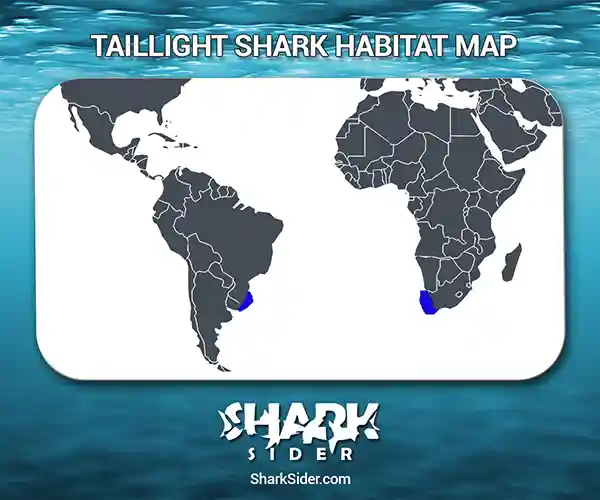The taillight shark is a little-known species that closely resemblesthe pygmy shark. It gets its name from the unique pouch near its tail, which emits bioluminescent fluid.
Only four specimens have been found to date. The first was thought to be a mature male, later correctly identified as an immature female. It was caught by the Cape Town trawler Arum in 1963 and initially misidentified as a longnose pygmy shark. The scientific name of this species, Euprotomicroideszantedeschia, is derived from the pygmy shark (Euprotomicrusbispinatus)and the arum lily(Zantedeschiaaethiopica)inhonor of its discovery.
Taillight Shark Scientific Classification |
|
| Kingdom | Animalia |
| Phylum | Chordata |
| Class | Chondrichthyes |
| Order | Squaliformes |
| Family | Dalatiidae |
| Genus | Euprotomicroides |
| Scientific name | E. zantedeschia |
Description
The first specimen discovered was an immature female 17.6 cm (6.9 in) long. The following two taillight sharks caught were mature males measuring 41.6 cm (16.4 in) and 45.5 cm (17.9 in), respectively. The fourth, the largest on record, is an adult female measuring 51.5 cm (1.7 ft).
It is laterally compressed, with large oval eyes, a long rounded snout, and a big mouth. It has a dark brown upper half and a black lower half, with lighterfin tips. There are 29 and 34 rows of teeth in the upper and lower jaws, respectively, interlocked to form a continuous cutting surface. Its lips are thick and fringed; however, they are not suctional. Five pairs of gill slits are arranged in increasing order of size along its body. At the front of its cloaca is a pouch lined with luminescent tissue in the form of yellow papillae, which emit glowing blue fluid. There are tiny, light-emitting photophoresscattered throughout its body.
Taillight sharks have rounded paddle-like pectoral fins. The first dorsal fin is fairly smaller than the second and is located in the middle of the pectoral and pelvic fins. The pelvic fins are small and placed at the level of the second dorsal fin. There is no anal tail. The caudal fin has a pronounced notch near its tip, a long upper lobe, and a strong lower lobe.
Where do they live
Map Of The Taillight Shark’s Habitat

This fish has been found in the South Atlantic Ocean, off the coast of South Africa, Uruguay, and Chile (near Juan Fernandez islands). They were caught by trawlers operating at depths of 458-641 m (1,503-2,301 ft) and 195-205 m (640-673 ft). This suggests that they live in the open ocean, but it is unclear at what depth the nets caught them.
Behavior
Dietary
Not much is known about its diet. The presence of strong jaws and sharp teeth, along with the considerable size of its mouth, indicates that it is a formidable predator and can hunt reasonably large prey.
Reproductive
There is little knowledge of its reproductive habits and general life span. It is thought to be ovoviviparous like the rest of the species in its family and has small litters of live young.
Adaptations
One of the characteristics of the taillight shark is the bioluminescent pouch-like structure near its cloaca, which secretes luminous fluid. The actual purpose of this is unclear. Current theories say that it is used for self-defense, as well as for hunting prey.
Another unique adaptation is its paddle-shaped pectoral fins, likely used to propel itself.
Human interactions
Taillight sharks are not a threat to humans. Due to their small size and open ocean habitat, they are not commercially fished and are caught very rarely. There is insufficient information available about their numbers.
The IUCN has classified this species as “Least Concern” or “LC.”
